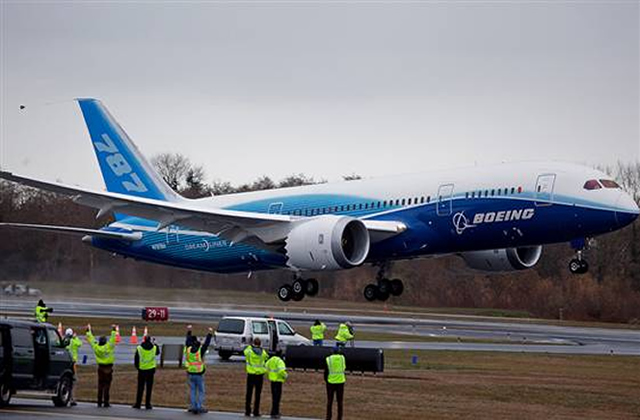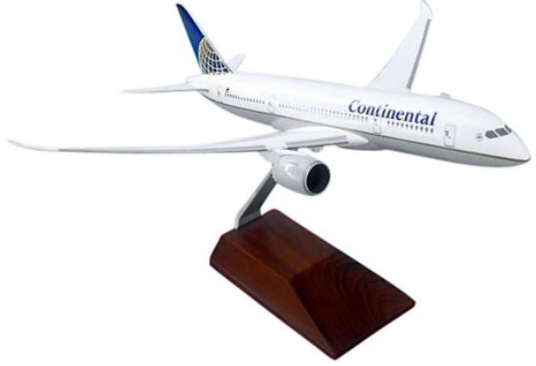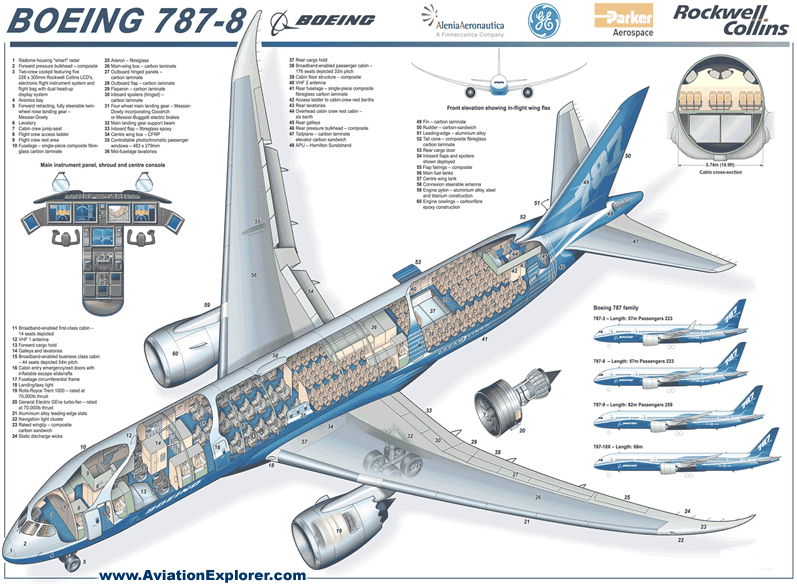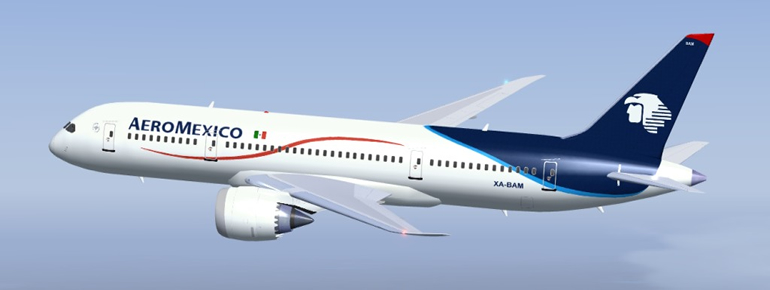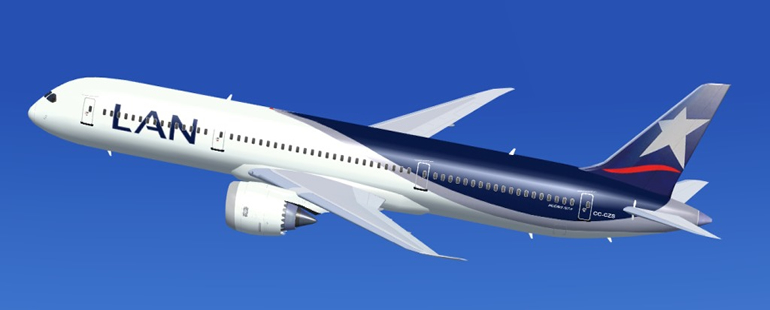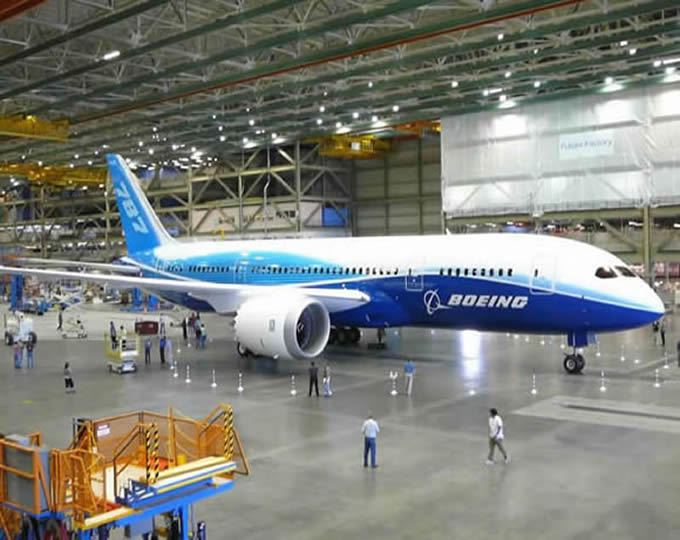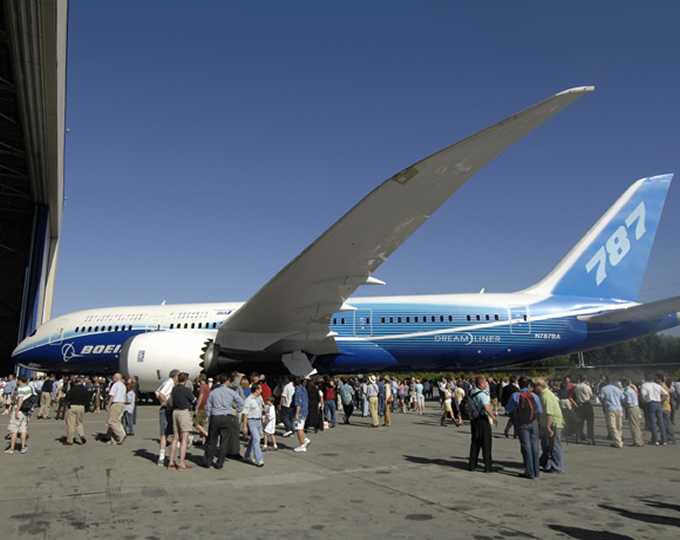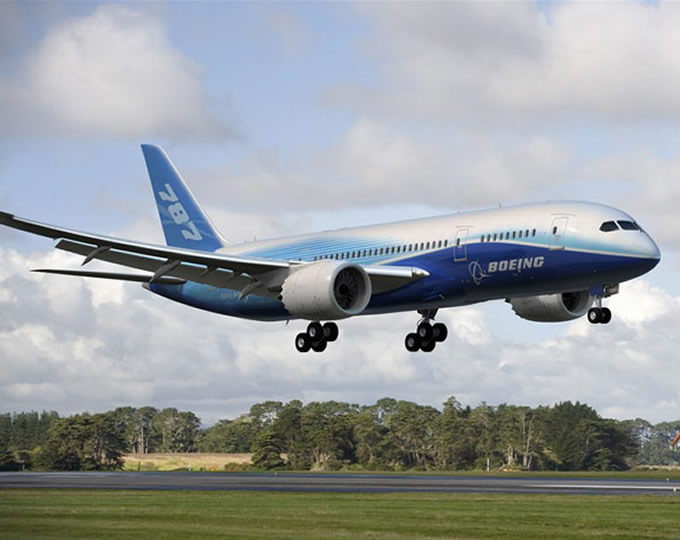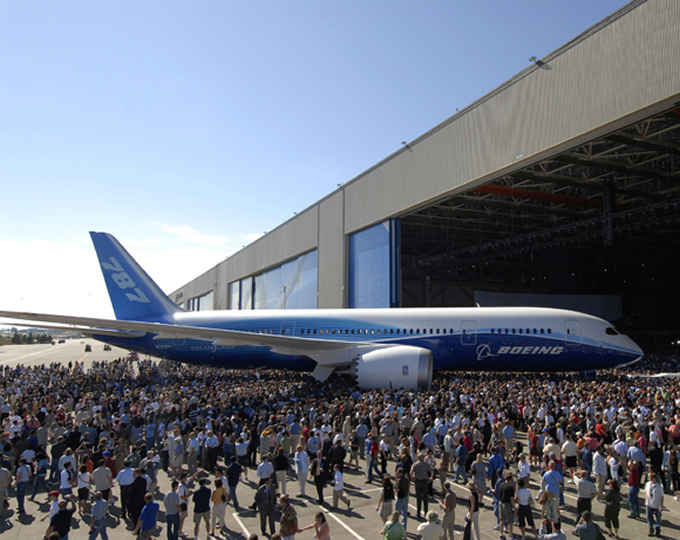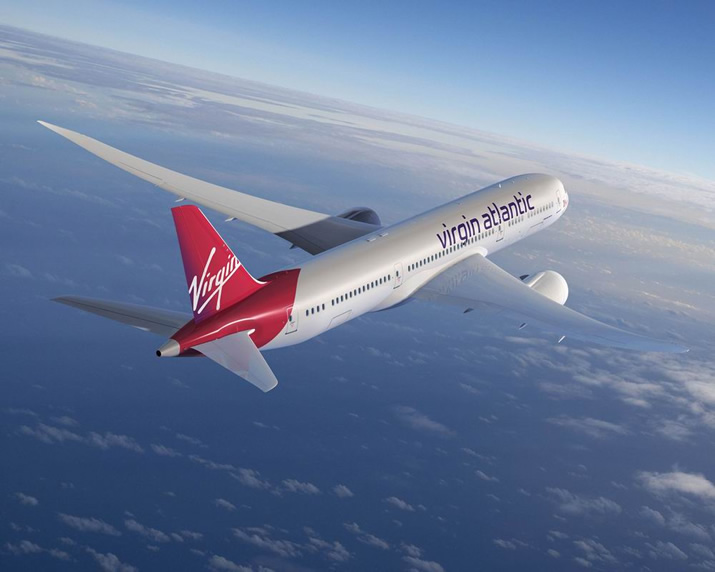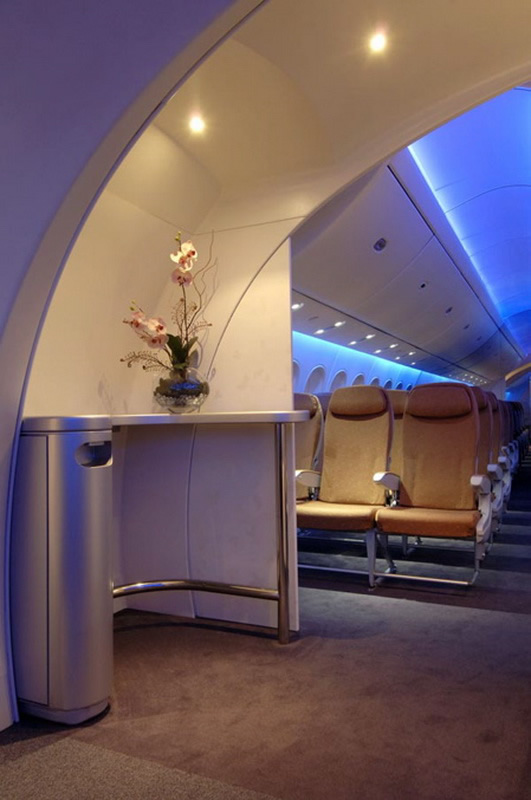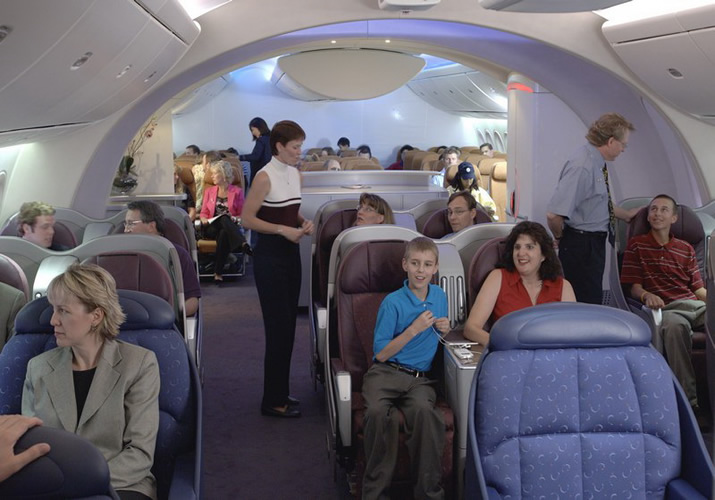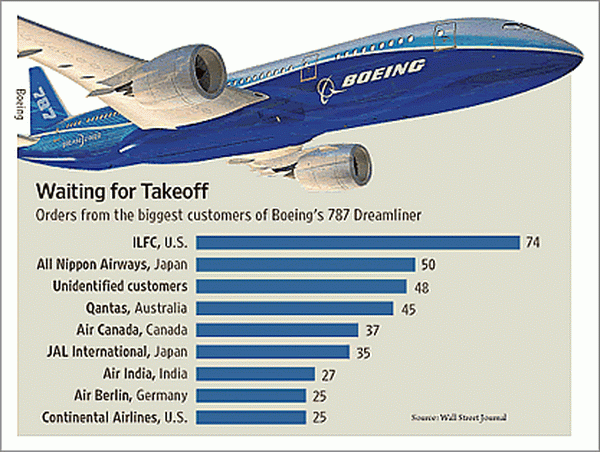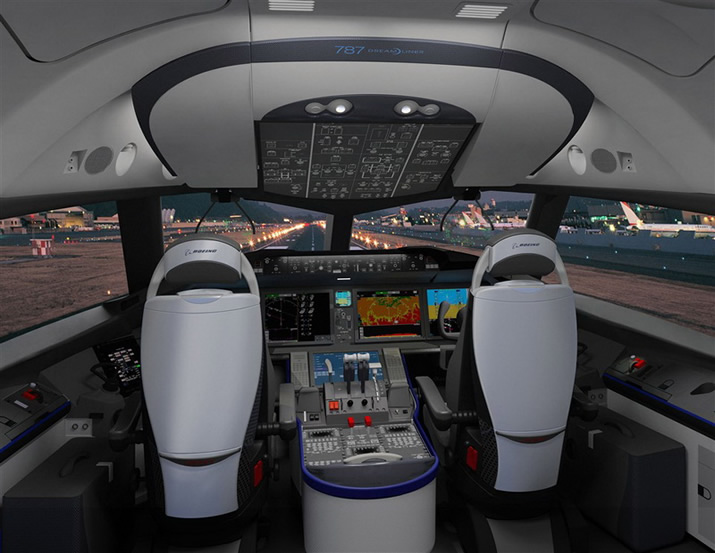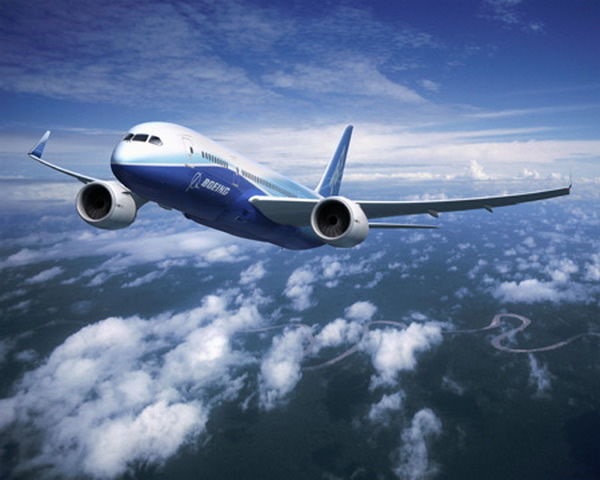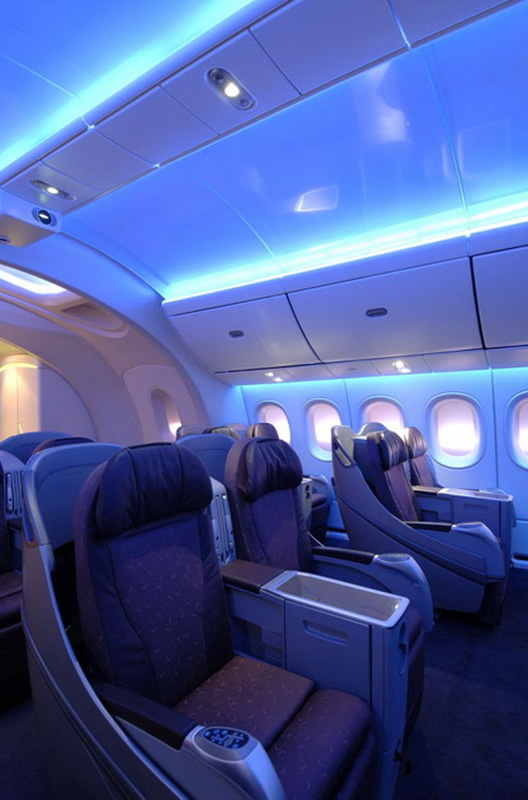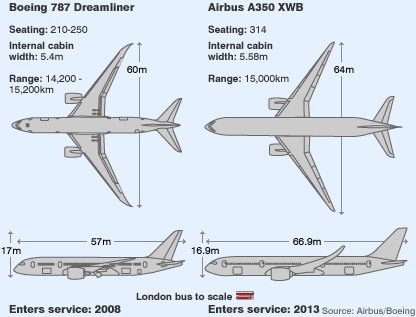THE NEW STREAMLINED BOEING 787 DREAMLINER AIRLINER
AIRCRAFT HISTORY, INFORMATION, PICTURES AND FACTS
- BOEING 787 FIRST MAIDEN FLIGHT VIDEO DEC 12, 2009 -
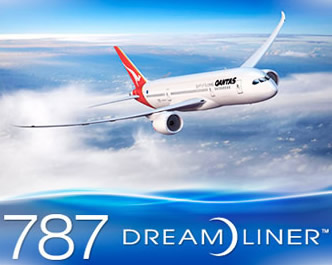 |
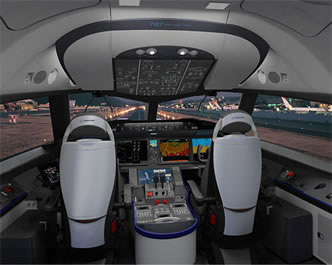 |
Boeing 787 United (Continental) Airlines First Revenue Flight - Takeoff - Crew Bunks - Landing
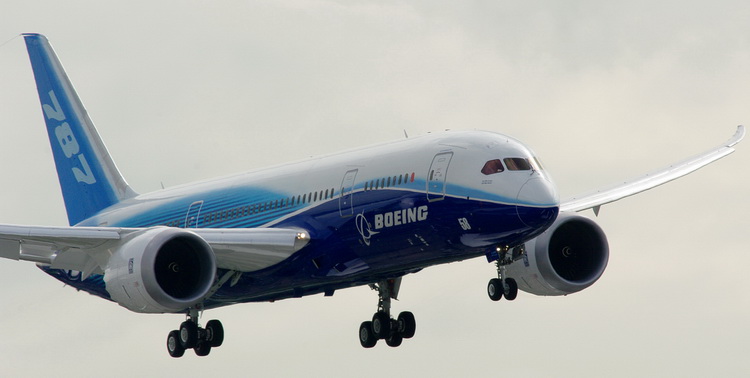
Boeing 787 In Flight With Wing Flex Visible
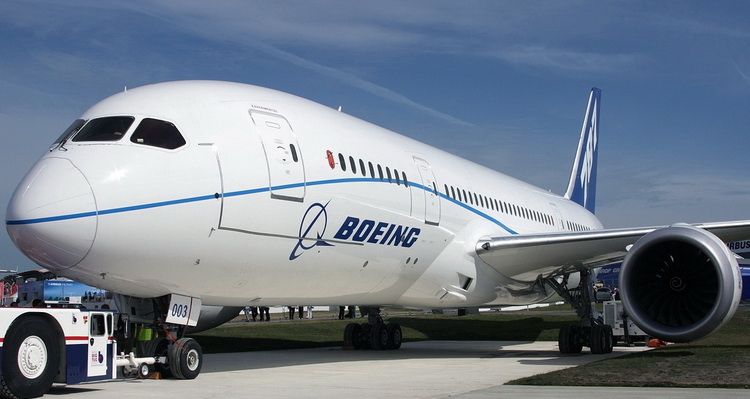
BOEINGS NEW 787 DREAMLINER AIRLINER
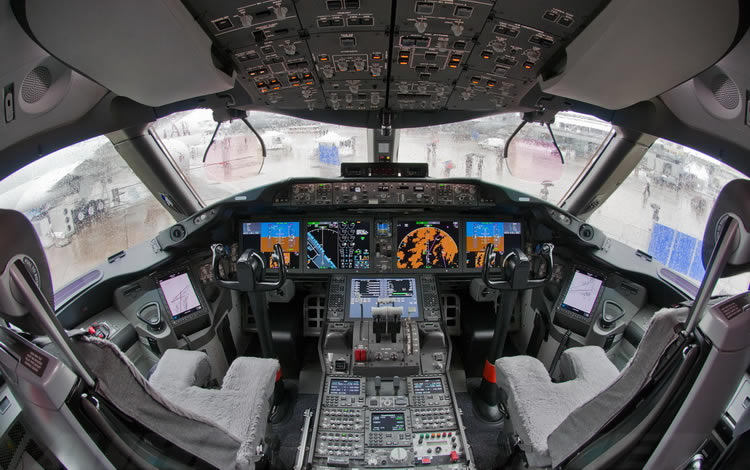
NEW Boeing 787 Dreamliner Cockpit Photo Image
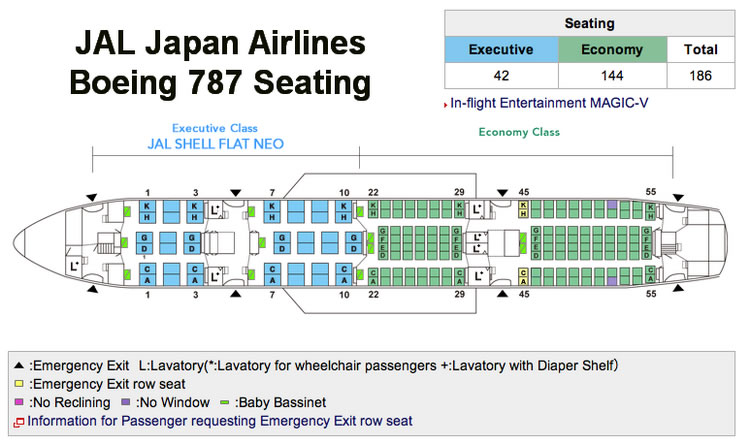
JAL Japan Airlines Boeing 787 Seating Chart Map Layout
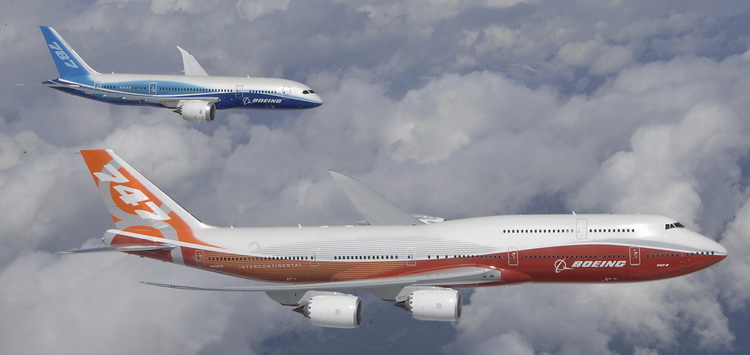
Boeing 787 and Boeing 747-8 In Flight

Boeing 787 Seating Chart
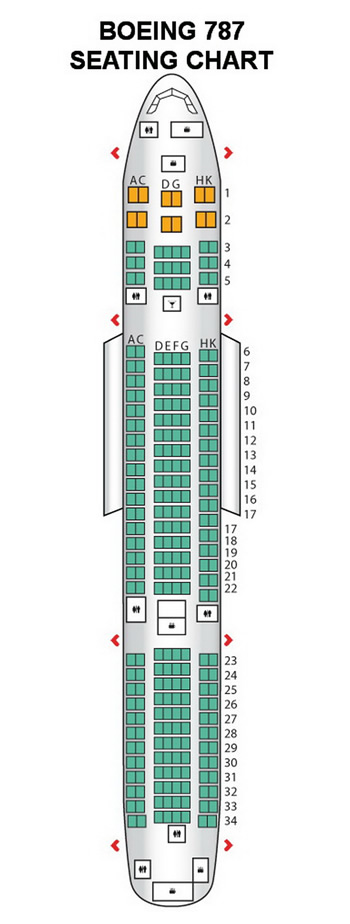
new boeing 787 seating map
|
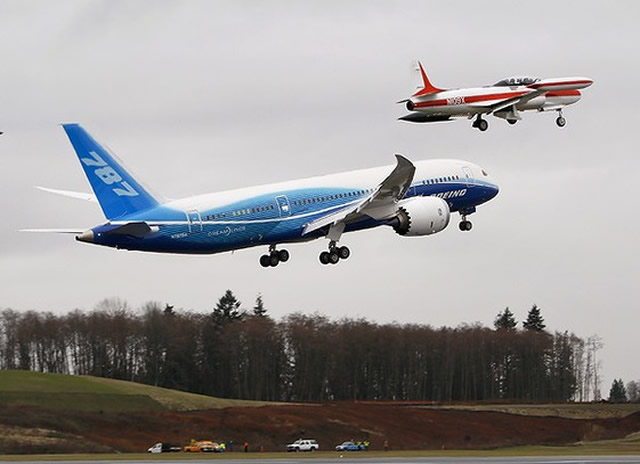 |
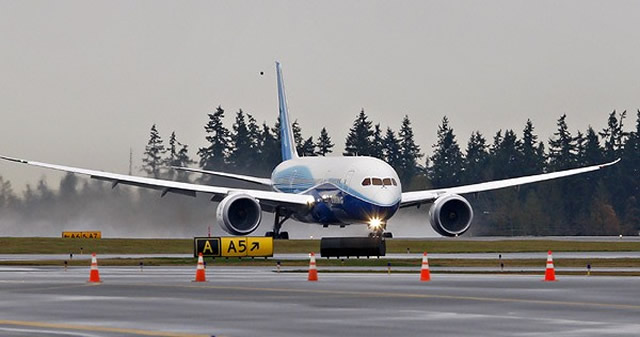 |
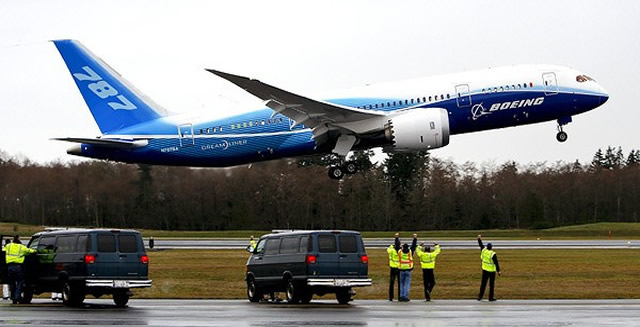
THE BOEING COMPANIES 787 DREAMLINER FIRST FLIGHT PHOTOS |
|
BOEING 787 DREAMLINER FIRST FLIGHT TAKEOFF AND LANDING VIDEO |
BOEING 787 DREAMLINER FIRST FLIGHT LIVE VIDEO - DEC 15, 2009 |
BOEING 787 DREAMLINER MAIDEN FLIGHT VIEW 2 MOVIE - DEC 15, 2009 |
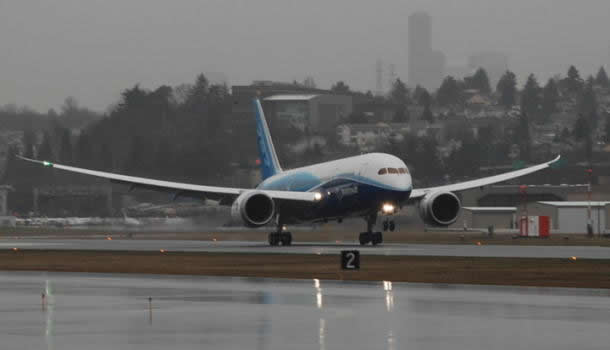 |
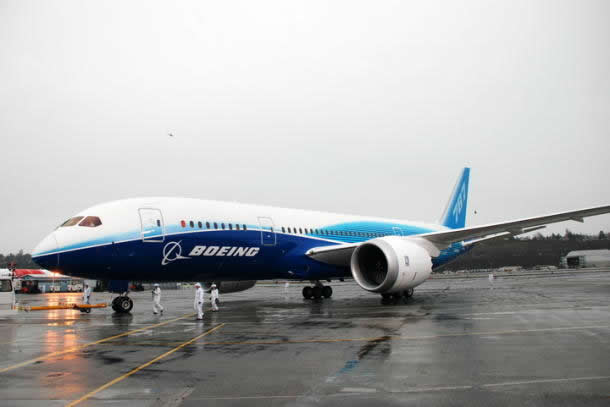 |
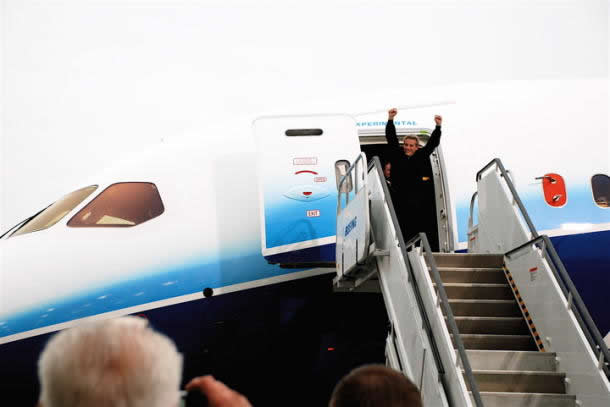 |
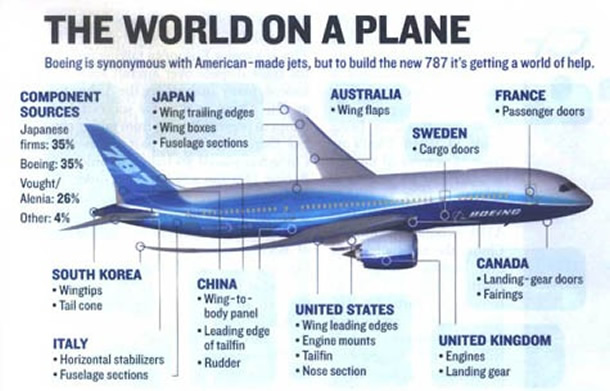 |
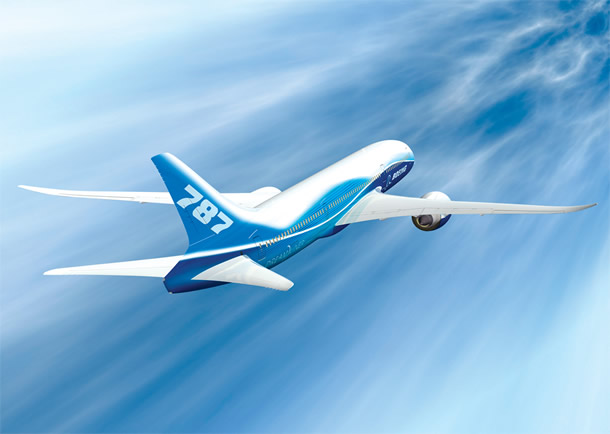 |
The Boeing 787 Dreamliner is a mid-sized, wide-body, twin engine jet airliner currently under development by Boeing Commercial Airplanes. It will carry between 210 and 330 passengers depending on variant and seating configuration. Boeing stated that it will be more fuel-efficient than earlier Boeing airliners and will be the first major airliner to use composite materials for most of its construction. Boeing's development of the 787 is also innovative in the collaborative management approach with suppliers. On January 28, 2005, the aircraft's development designation 7E7 was changed to the 787. Early released concept images depicted a radical design with highly curved surfaces. On April 26, 2005, a year after the launch of the program, the final look of the external 787 design was frozen, with a less rakish nose and a more conventional tail.
Boeing featured its first 787 in a rollout ceremony on July 8, 2007, at its Everett assembly factory, by which time it had become the fastest-selling wide body airliner in history with nearly 600 orders. Originally scheduled to enter service in May 2008, production has been delayed and it is currently scheduled to enter into service in late 2009. When 767 sales began to go the way of the Airbus A330-200 in the late 1990s , Boeing began to consider replacement aircraft. As the 747-400 was also beginning to lose traction, the company began to consider two new projects—the Boeing Sonic Cruiser and the 747X. The Sonic Cruiser was intended to achieve higher speeds (approximately Mach 0.98) while burning fuel at the same rate as the existing 767 and A330-200 products. The 747X would stretch the 747-400 and give it a composite supercritical wing to improve efficiency.
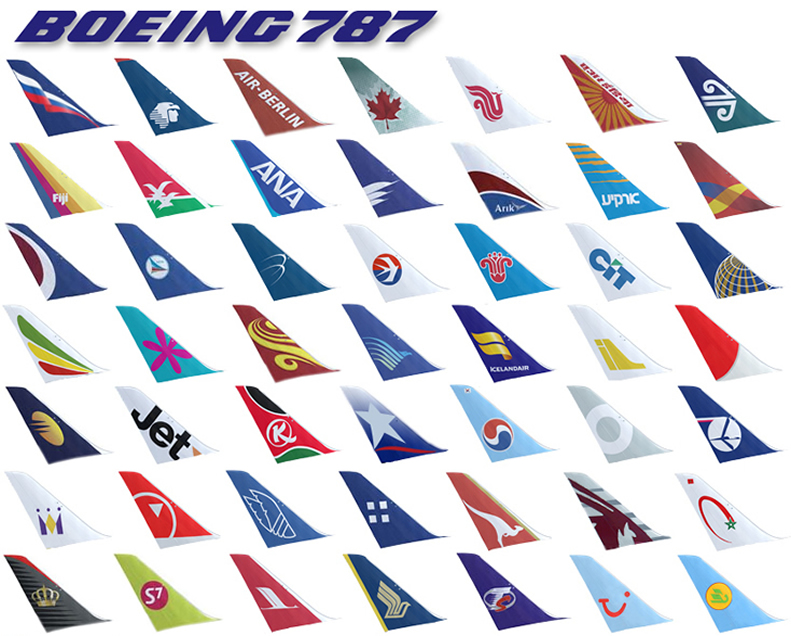 THE ABOVE BOEING 787 TAILS ARE THE AIRLINES WORLDWIDE THAT HAVE ORDERED THE BOEING 787 DREAMLINER 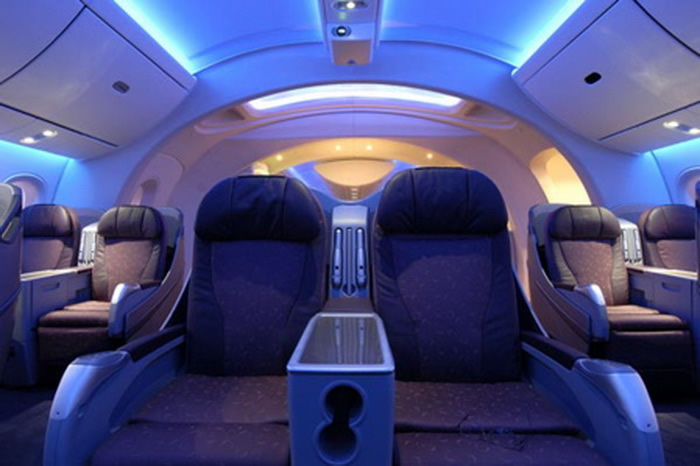 BOEING 787 DREAMLINER INTERIOR VIEW
BOEING 787 DREAMLINER INITIAL ROLL OUT PICTURES
Market interest for the 747X was tepid; the Sonic Cruiser faced much brighter prospects. Several major airlines, primarily in the United States, voiced their optimism for the concept. By decreasing travel time, they would be able to increase customer satisfaction and aircraft utilization. When the September 11, 2001 attacks occurred, the global airline market was upended. The worst-affected airlines were in the United States—those same airlines were the primary proponents of the Sonic Cruiser. Airlines were not able to justify large capital expenditures, and due to increased petroleum prices, were more interested in efficiency than speed. Boeing proceeded to offer airlines the option of using the airframe for either higher speed or increased efficiency. Due to high projected airframe costs, demand continued to evaporate. Eventually, Boeing switched tacks and decided to offer an alternative project, at the same time cancelling the 747X. |
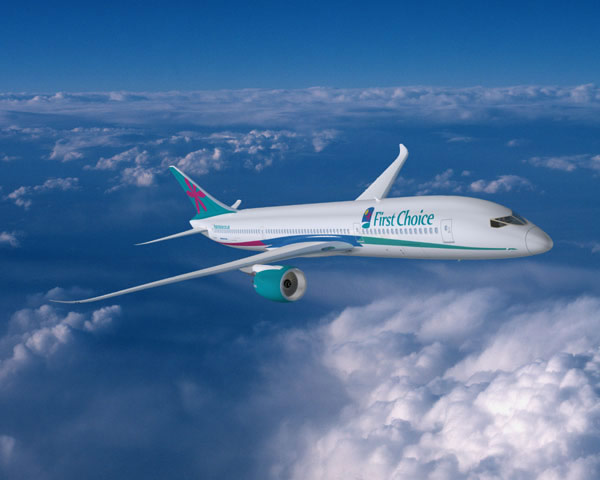 |
First Choice Airlines Boeing 787 Dreamliner Digital Rendition Picture
The replacement for the Sonic Cruiser project was dubbed the 7E7. The "E" was said to stand for various things, depending upon the audience. To some, it stood for "efficiency," to others it stood for "environmentally friendly," etc. In the end, Boeing claimed it merely stood for "Eight," after the aircraft was eventually rechristened "787" when several Chinese airlines ordered the product. The 787 essentially uses the technology proposed for the Sonic Cruiser in a more conventional airframe configuration. Boeing claims that the 787 will be up to 20% more fuel-efficient than comparable aircraft. This efficiency improvement will come primarily from the engines; the airframe weight saving due to high usage of composite materials will provide the rest. The 787 will also have advanced systems; for example, signals will be carried around the aircraft using a version of Ethernet, and the brakes will be electrically rather than hydraulically controlled, pushing towards the industry goal of a 'more electric aircraft'.
On December 16, 2003, Boeing announced assembly would take place in Everett, Washington, employing 800 to 1,200 people. On April 6, 2004, Boeing announced that it had selected two engine types, the General Electric (GE) GEnx and Rolls-Royce Trent 1000 to power the 787. Significantly, this leaves Pratt & Whitney unable to offer one of their own engines to 787 customers. Boeing may have wished to rely on two evolved versions of existing engines rather than the higher-risk option of an all new Pratt & Whitney engine, particularly in light of Pratt & Whitney's recent failures in the Regional Jet market and failed PW8000 engine for the A318.
For the first time in commercial aviation, both engine types will have a standard interface with the aircraft, allowing any 787 to be fitted with either a GE or Rolls-Royce engine at any point in time. Engine interchangeability makes the 787 a far more flexible asset to airlines, allowing them to change from one manufacturer's engine to the other's in light of any future engine developments which conform more closely to their operating profile. The engine market for the 787 is estimated $40 billion USD over the next 25 years.
Any commercial launch of a new airliner can be expected to draw scathing comments from competitors, Boeing's doubt over the A380 and Airbus' mocking of the Sonic Cruiser are recent examples. The 787 is no exception, as Airbus' John Leahy has made attempts at refuting all of the claims that Boeing have made for the aircraft. Airbus is of course in no position to start development of a comparable plane, with the ongoing development of the A380, however Airbus might not be in such a dangerous position as they appear. Airbus is now offering a reduced weight A330 with the 787's next generation turbofans (modified to generate bleed air as with the proposed 747 Advanced). Although this proposed new jet, renamed the A350 , lacks the 787's widespread use of composites and advanced systems, Airbus still claims it will almost match the 787's performance and reduced operating costs.
On April 26, 2004, the Japanese airline All Nippon Airways (ANA) became the launch customer for the 787, then still-known as the 7E7, announcing a firm order for 50 aircraft to be delivered beginning in 2008. The order is valued at roughly $6 billion and represents the largest ever single launch order for a new Boeing jetliner, as well as illustrating market acceptance of the concept. ANA will buy thirty 787-3, 300-seat, one-class aircraft for the domestic market, and twenty 787-8, long-haul, 230-seat, two-class aircraft for international routes such as Tokyo Narita - Los Angeles. The aircraft will allow new routes to be opened to minor cities not previously served, such as to Denver.
On June 28, 2004, Air New Zealand (ANZ) became the second 787 customer, announcing a firm order for two aircraft and options on 16 more. This unusual arrangement was likely precipitated by ANZ's perception that they needed to secure their delivery slots, far in advance. The aircraft will be used to develop new international routes and increase frequency on existing routes. ANZ was the first airline to announce which powerplant would power their aircraft, selecting the Trent in June 2004.
Blue Panorama of Italy and First Choice Airways of the United Kingdom placed orders for four and six examples, respectively, of the 787-8 on July 7, 2004. Primaris Airlines (run by several prominent industry veterans), which caters to business customers in the same vein as Switzerland 's PrivatAir, placed an order on October 21, 2004 for 20 787s and options for 15 more. The Primaris order represents the first American customer for the aircraft. On December 22, 2004, Japan Airlines ordered 30 787's with 20 options for close to $4 billion, and on December 29 of the same year, Continental announced an order for 10 787 airframes.
On December 31, 2004, Vietnam Airlines became the eighth airline to signal its intent to buy the 787, with an order for four jets. This was followed on January 28, 2005 with an order from China Aviation Supplies Import & Export Corporation for 60 787s, which will be distributed among six Chinese state-owned airlines. First deliveries are expected to commence in prior to the 2008 Summer Olympics in Peking. |
© AviationExplorer.com - The Website For Aviation Enthusiasts |





